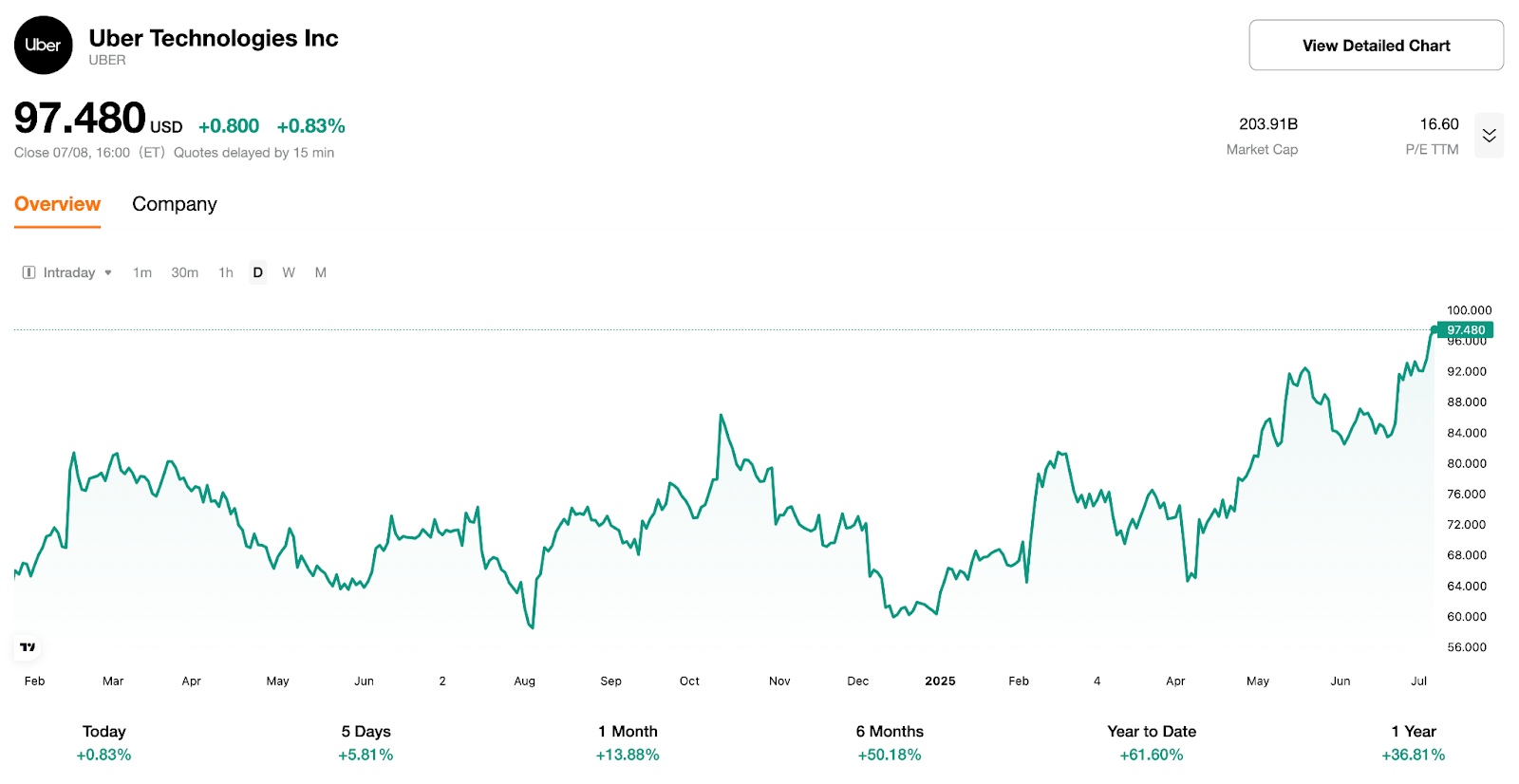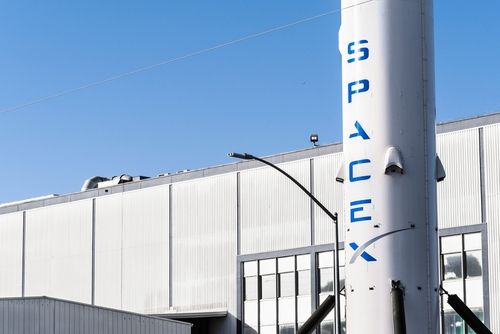Uber Shares Soar 60% This Year — Is Robotaxi an Opportunity or an Imminent Threat?

TradingKey - U.S. ride-hailing giant Uber (UBER.US) has seen its stock steadily climb in recent weeks, hitting an intraday high of $97.60 on July 8 and logging a year-to-date gain of more than 60%. It has become one of the top-performing stocks in the S&P 500 so far in 2025, with its market cap now nearing $204 billion — a clear sign of strong investor confidence in its strategic direction and growth potential.

[Intraday chart of Uber stock, source: TradingKey]
In recent years, Uber has advanced its “aggregator” strategy, bundling together ride-hailing, food delivery, grocery delivery, and even alcohol sales into a single platform to boost user engagement and retention. The company has also partnered with Waymo to roll out autonomous taxi services in Austin and Atlanta — a move widely seen as a key part of its positioning for future mobility trends.
This multi-pronged approach has helped Uber achieve solid growth in 2025, with full-year revenue expected to rise 15%. Its diversified business model has proven resilient and supports its current valuation amid shifting market conditions.
However, the rapid advancement of robotaxi technology continues to introduce uncertainty. Waymo is already operating autonomous taxis independently in San Francisco and Los Angeles, while Tesla has launched limited robotaxi trials in Austin. These developments could eventually challenge the core value proposition of traditional ride-hailing platforms.
Laffer Tengler Senior Equity Analyst Jamie Meyers noted that Uber’s diversified offerings have helped ease near-term pressures.
Canaccord analyst George Gianarikas acknowledged Uber’s strong short-term performance but warned that the long-term impact of robotaxi technology could fundamentally reshape the ride-hailing industry.
For insight into how top investors are navigating this evolving landscape, tracking their positions in auto-related stocks may offer valuable clues: Click to view holdings







